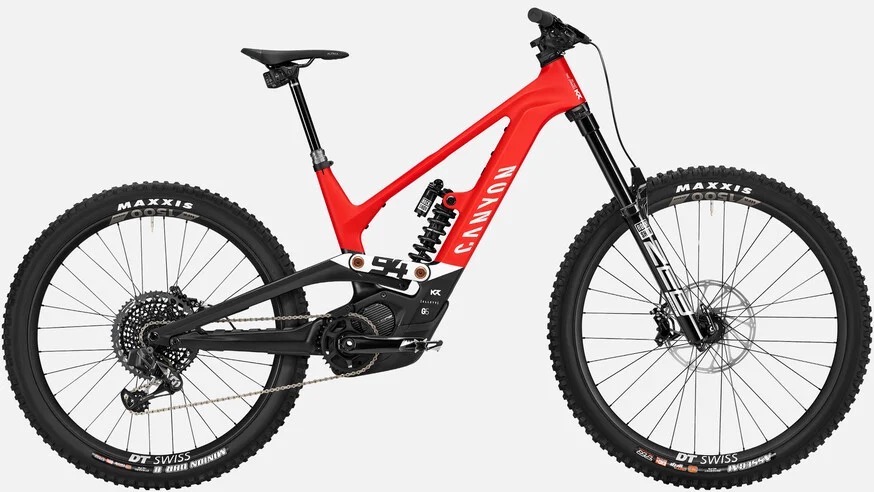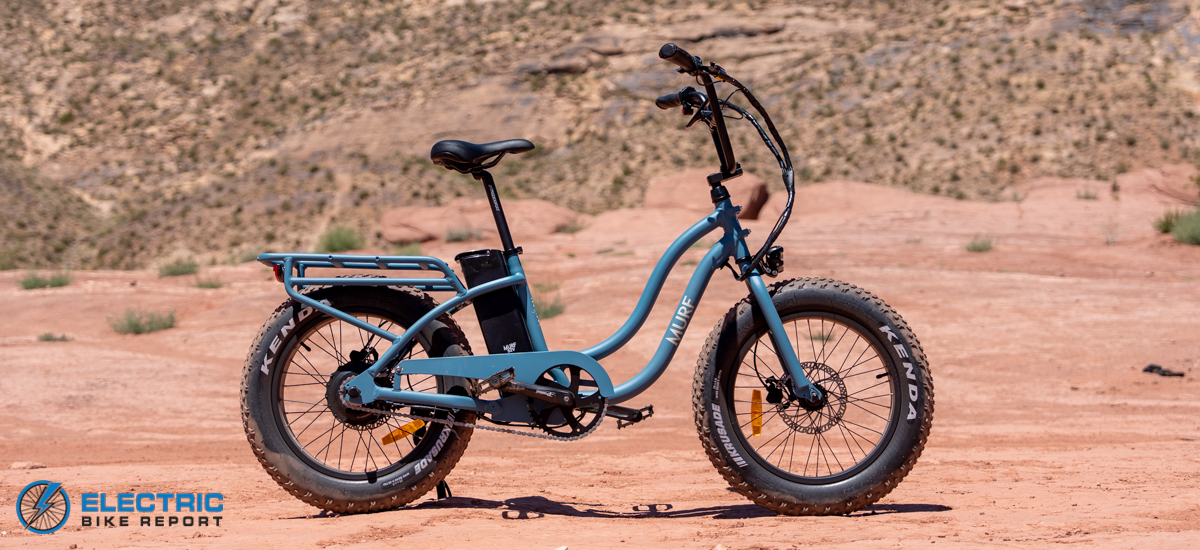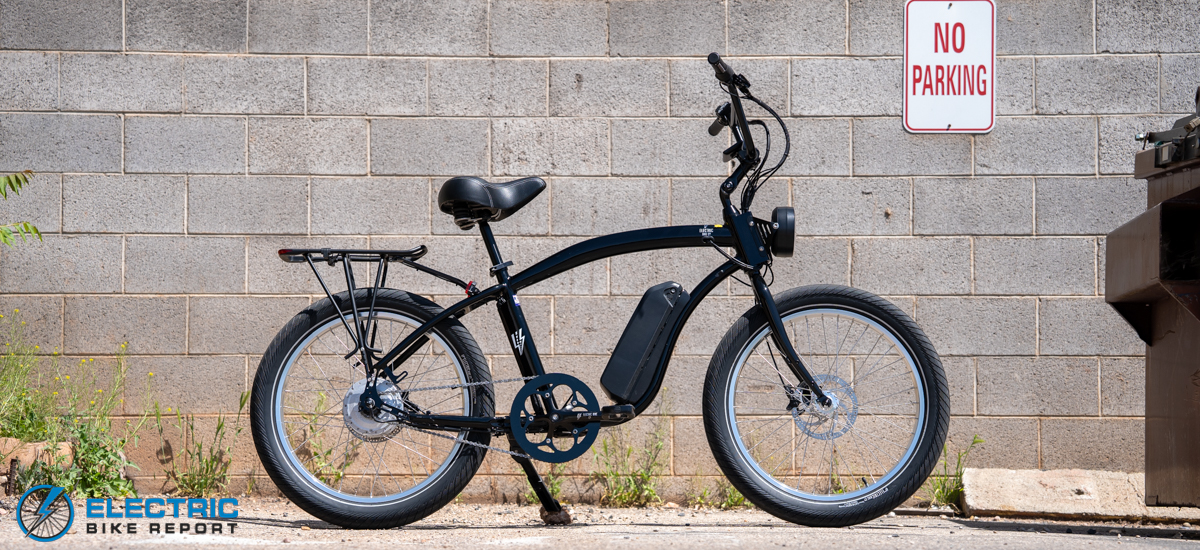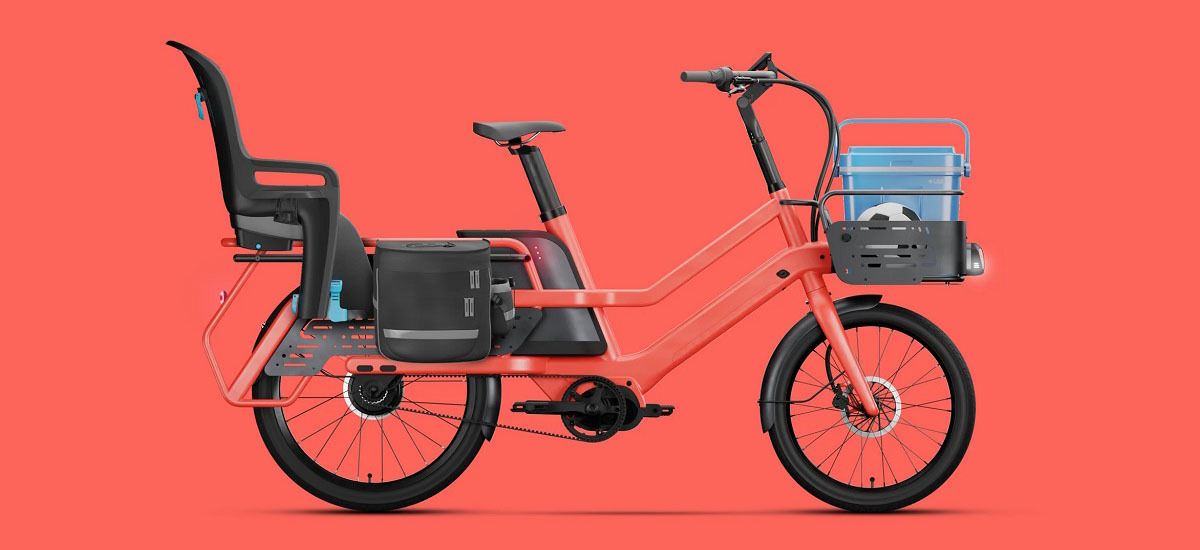
I was slumming it on Twitter today when I came across the following post:
I started to really think about this chart and started to think about if I agreed with his theory that adding an electric motor on a bike increased the overall load on the bike by 708%. Since most of my time in the last 8 years has been spent repairing destroyed high power ebikes (1000-4000 Watts) I have to actually take this chart into consideration and start thinking about whether throwing on a high power electric mid drive motor really is what has created all this extra time spent repairing ebikes.
When I think about the main issues I’ve had with high power ebikes vs bicycles it really breaks down into these categories (in order of seriousness):
- Frame fatigue and breakage
- Freehub destruction
- Drivetrain issues (chain, chainring and cassette issues)
- Brakes
- Spoke breakage
- Tire wear
I want to discuss each of these issues individually because they all deserve their own descriptions. This article will not discuss maintenance of motors and batteries, but these items also require a fair amount of maintenance on their own as well that is outside the scope of this article.
Frame fatigue
One of the biggest issues with all metal framed bicycles has to do with metal fatigue. This is something that no manufacturers ever want to talk about, but it is a real issue.

Where do I begin with metal fatigue and those flimsy steel and alloy bicycle frames? Well metal fatigue is like the monster hiding in your closet. It’s just always there, lurking in the shadows, waiting to pounce and cause total chaos.
When a metal component, like a steel or alloy bicycle frame, is subjected to repeated stress from all that pedaling, rough handling, and riding over log piles, it can develop tiny micro cracks over time. And before you know it, those micro cracks have grown into full-blown metal breakage, and your trusty steed is no more.

So, what’s the solution? Well, there isn’t one, folks. Metal fatigue is an inevitable part of life. All you can do is try to limit your exposure by not riding like a maniac and not installing electric motors improperly. If you install a high power mid drive, make sure the secondary reduction gear is not hitting your chainstay (you should be able to pass a piece of paper freely between the motor and the chainstay). Another big issue I have had is using seat post adapters (just get the right size saddle post) . I have broken almost every frame I have ever owned both on ebikes and regular bikes, so I am a bad person to make a comparison between the two. The only frames I have NOT broken are the steel ones I’ve had. That being said the only solid advice I can give is if you can go with a steel frame for your ebike, chances are it is less likely that it will break.
If you use a hub motor on any bicycle frame then you should use a torque arm, this will really save your frame over time from fatigue.

I have NOT had good luck welding alloy bike frames for repair. I’ve tried it several times and most of the time the repairs eventually break. The problem is you really need to heat treat the entire frame after welding it or you only get about 30-40% of the original strength of the frame. I am now experimenting with inserting an aluminum tube or carved pieces of hardwood inside the frame and then coating it with JB Weld epoxy on the inside and outside of the break. So far I have not had repairs done with JB Weld epoxy fail.
Freehub Flubs
If you ride high power mid drives eventually you will deal with a blowout of your rear freehub which will allow you to pedal as much as you want but the bike just won’t move. The freehub is a ratcheting mechanism which keeps your bike moving forward, but also allows the bike to spin freely without pedaling.

Most of my mid drives are over 1500 Watts and the new Ludicrous 2 controller peaks at 4000 Watts. When using the 750W BBS02 that peaks at about 1200Watts I have not had serious issues with freehub failures. With 1500W and above it seems like freehub failure is inevitable. The higher power, the faster the freehub will fail, but on average it takes about 1-2 years of use and abuse until failure. The solution I have come up with is to relace the rear wheel with a DT Swiss hub. The DT Swiss hubs are incredibly durable, and they have a ratcheting system that can be replaced on the trail without any tools in about 5 minutes. In the last 5 years I have only had one set of ratchets fail, and it was an easy and cheap replacement. I encourage people to use the 18 Tooth ratchet replacement because the smaller number of ratchet teeth you have, the stronger each of them will be.

Drivetrain destruction
Chains break. There is not much you can do about that, other than to realize that the fewer rear cogs you have then the less often your chain will break. 8sp chains break a lot less often than 12 sp chains do and single speed chains seem to break less than any other bicycle chain you can use. Unless you are running an Internal Geared Hub (IGH) in the rear then you will probably be running with multiple gears and a narrower chain. If you have a mid drive then all that motor’s power is going to be put through your chainring, chain and cassette. These items are designed to deal with around 200 watts so if you use them on a mid drive that is 1000-4000 Watts then it goes without saying that the lifetime of these items is going to be greatly reduced. I always go biking with a power link which allows me to keep riding even if I have a chain breakage. In order to install a power link you will have to also bring a chainbreaker so you will have to have a bike tool with a chainbreaker with you as well. I use the Topeak 18 mini which runs about $35 and it has 99% of what I would ever need on the trail, including the all important chain breaker.

For front chainrings if you can use a steel chainring it will last the longest and be the most resistant to excessive wear. With poorly aligned chainlines you really need a Narrow/Wide chainring and the one that I have found work the best and last the longest is the Race Face series of chainrings. The Luna Eclipse chainrings for the BBS02/HD and the Lekkie chainrings are also extremely tough and long lasting and create a better chainline than using a Raceface chainring with an adapter.
Cassettes can also be extremely problematic with powerful mid drives. I tend to migrate towards cassettes that have most of the cogs attached together. The problem with cassettes that have individual cogs is that the cogs will dig into the alloy cassette freehub body over time creating deep gouges in the splines making it extremely hard to get the cassettes on and off.

Brake Breakage
Brake wear, the bane of every cyclist’s existence. You know what they say, the only thing constant in life is change, and brake pads are no exception. 10 years ago I just rode my bike while they kept screaming away and ended up wearing through the pads and the cylinders too which made for a much harder repair than if I had just replaced the pads when they started screeching like nails on a chalkboard.

Now, when it comes to ebikes vs bicycles, let’s just say that brake wear is like the difference between a quick nap and a full 8 hours of sleep. On a regular bicycle, the brake pads will wear down slowly, like a gentle snooze in the afternoon sun. But on an e-bike, it’s a whole different story. Those heavy high power beasts require much more stopping power, so the brake pads wear down at a much faster rate, like a marathon all-nighter. Often when I am shredding on my ebike I will even keep the brakes partially on while I am throttling the motor because if I want to hit the brakes before crashing hard I can stop a lot faster if I’m already covering the brakes and have them partially pulled in. I usually buy a bunch of the cheapest sintered brake pads I can on Amazon and then keep a couple extra in my bike shop. I write the brake style (BB5, BB7, Juicy, whatever) with black sharpie on the zip lock bag and throw the extras in my spare brake box so I can just grab them as soon as soon as they start making real noise.
Brake wear is an easy fix, just replace those whining pads, and you’ll be back on the road, ready to stop on a dime. Or a nickel. Or whatever tiny coin you need to get stuck in your car seat.
Spoke Broke
When I relace a wheel I tend to use 13 Gauge spokes, however most of my pedal powered bikes tend to have 14 Gauge spokes. Some ebikes I have bought in the past have shipped with 12 Gauge spokes. Generally I would say that the 14 Gauge spokes on my pedal powered bikes break more often than 13 Gauge spokes on my ebike and I haven’t had any 12 gauge spokes ever break. If I have to replace a broken spoke I will generally replace it with one that is a thicker gauge so it won’t break again and I tend to check my wheels once a year by plucking each of the spokes and adjusting them based on tone. A higher pitched spoke will be much more likely to break than one that produces a lower tone when you pluck it. Spokes over time can get looser which means their neighbors will get tighter.

Tires are tired
For riding on trails and in snow I have not noticed excessive tire wear on my ebikes, especially when compared with my pedal powered bike. This is not true for my many friends who ride their ebikes on pavement. They seem to burn through tires at a shocking rate. When I was a teenager I used to ride my bike to school every day which was about 20 miles a day. I think over a 3 or 4 year period of daily commuting I don’t ever remember changing out the tires on that bike. At the normal speeds of pedal powered bikes I just don’t think most bike tires wear down that fast. When you double that speed and ride much faster and farther then it does seem like tire wear can be much more of an issue.
So going back to the original tweet that spawned the idea for this article, do I agree or disagree that ebikes require about 700% the wear and tear for equal amount of riding? Although I spend a fantastic amount of time pushing pedals as well as riding ebikes I don’t think that his assumptions are correct. Overall I would say that high power ebikes require about twice the amount of maintenance and repairs of a normal pedal powered trail bike. There are a lot of ebike haters out there that want people to think that ebikes are much more of a pain to keep working than normal bicycles do. The reality is that although ebikes do require about twice the maintenance, they also get you about twice as far in the same amount of time riding so my feeling is that it is really just a wash. There is generally a higher price premium to get into ebikes than regular bikes, but because for many people a good cargo bike can replace their car, ebikes end up being more more affordable than any car could ever be.
You can find me on Twitter at @efatbike and watch me struggle to learn how to tweet.
Ride On.






